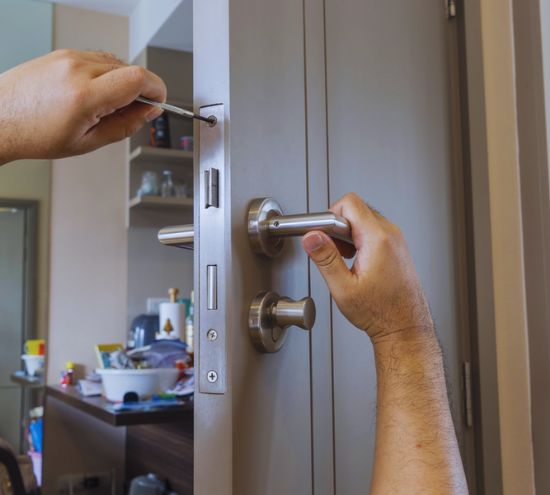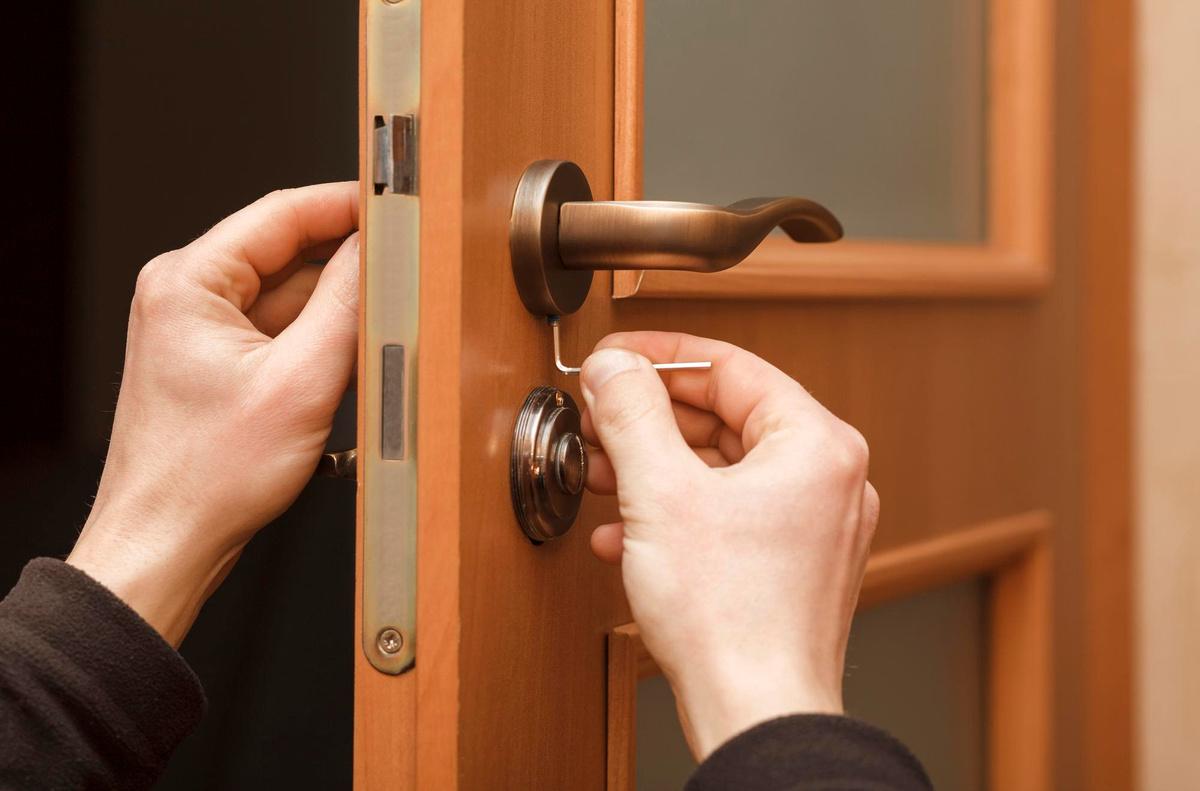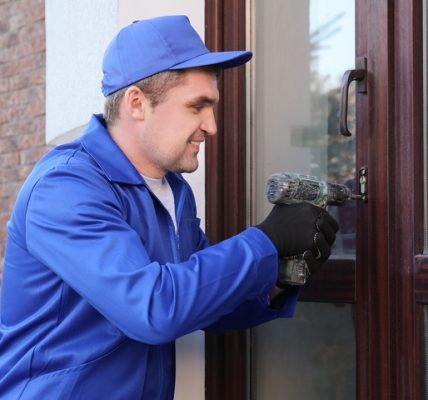Door lock repair and replacement are common tasks for maintaining the security and functionality of your doors. Whether you’re dealing with a malfunctioning lock or want to upgrade to a more secure option, here are the steps to follow:
For Lock Repair:
- Assess the Lock Issue: Determine the specific problem with the lock. Common issues include sticking, jamming, or difficulty turning the key.
- Gather Necessary Tools: If you have some DIY skills and the issue appears minor, gather the necessary tools, such as lubricant, a screwdriver, or pliers.
- Lubrication: Try applying a lubricant like WD-40 to the lock mechanism. This can often resolve minor issues with sticking or difficulty turning the key.
- Inspect and Clean: Carefully inspect the lock, and if you notice debris or rust, clean it using a soft brush and a rust-removing solution.
- Disassembly (if necessary): If the problem persists, you may need to disassemble the lock. Follow the manufacturer’s instructions or seek guidance from online tutorials, but be cautious not to damage the lock further.
- Replace Worn Parts: If any parts are worn or damaged, consider replacing them. You can often find replacement parts at hardware stores or online.
- Reassemble and Test: Reassemble the lock and test it to ensure it works smoothly. If the issue is resolved, you’ve successfully repaired the lock.
For Lock Replacement:
- Determine the Reason for Replacement: Decide why you’re replacing the lock. Common reasons include security upgrades, damaged locks, or the desire for a different type of lock.
- Select a New Lock: Choose the type of lock you want to install. Options include deadbolts, knob locks, lever handle locks, electronic locks, and smart locks. Consider your security needs and preferences.
- Measure the Door: Ensure that the new lock you choose is compatible with your door’s thickness and the existing borehole. Measure the borehole size and the “backset” (the distance from the edge of the door to the center of the borehole).
- Purchase the New Lock: Buy the chosen lock, making sure it includes all necessary parts and keys. If it’s a smart lock, ensure you have the required connectivity components.
- Prepare the Door: Remove the old lock by unscrewing the screws on the interior and exterior sides of the door. Take out the old lock and clean the borehole.
- Install the New Lock:
- Follow the manufacturer’s instructions carefully for installation. This typically involves securing the lock on both sides of the door with screws.
- Make sure the lock mechanism aligns with the borehole, and the latch bolt extends and retracts smoothly.
- Attach the strike plate on the door frame for the latch to engage securely.
- Test the New Lock: Insert the keys or test the operation of the new lock. Ensure it locks and unlocks smoothly from both sides.
- Security and Key Duplication: If it’s a new installation, consider having the locks rekeyed or getting extra keys made as needed.
- Dispose of Old Lock: Safely dispose of the old lock or consider recycling it if possible.
If you’re not comfortable with Door lock repair and replacement, it’s advisable to hire a professional locksmith to ensure the job is done correctly and to maintain the security of your doors.



